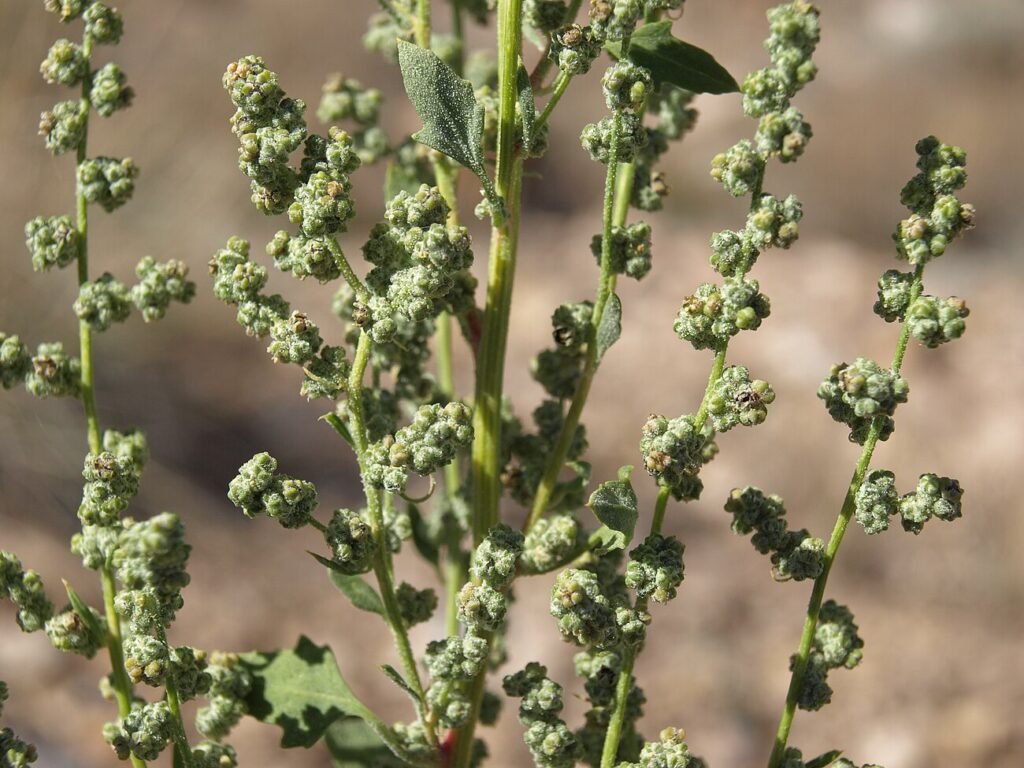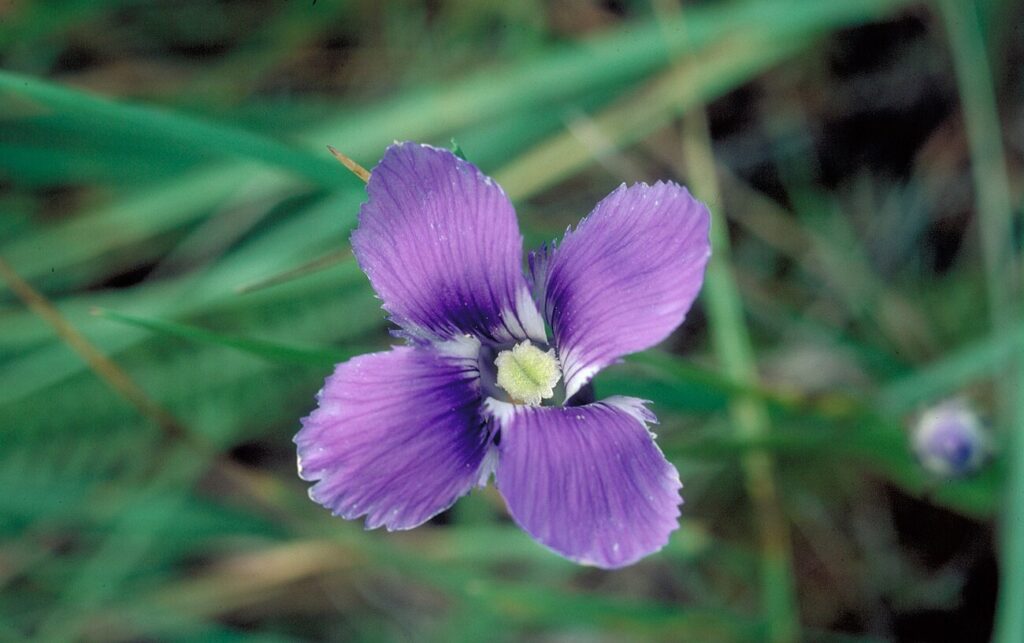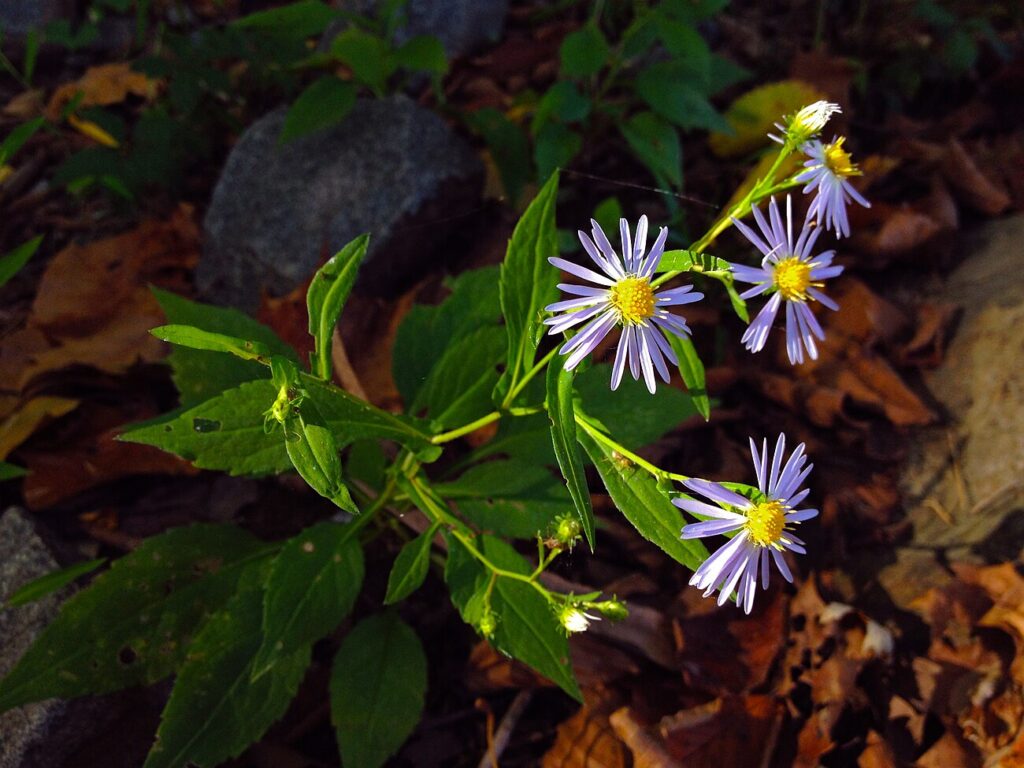Exploring Willowleaf Aster, Narrow-leaved Aster
Scientifically recognized as Symphyotrichum praealtum and classified under Asteraceae, stands out as a distinctive Herbaceous perennial known for its unique characteristics. While it may also be found under other Synonyms, Aster praealtus, Aster divaricatus.withN/A form. You can use our free plant care app PlantPlants to identify Willowleaf Aster, Narrow-leaved Aster.
Temperature
Min 20 F, Max 95 F
Watering
Moderate watering; prefers consistent moisture
Fertilizing
Balanced (N-P-K) fertilizer
Sunlight
Full sun to partial shade
Toxicity
Non-toxic


Appearance and Growth Of Willowleaf Aster, Narrow-leaved Aster
At maturity, this species reaches approximately 2-4 feet tall, presenting Narrow, lance-shaped green leaves, with a serrated edge along with Daisy-like flowers with purple petals and yellow centers, blooming in late summer to fall, followed by Small, tufted achenes that are dispersed by wind. These features are supported by a reliable Fibrous root system, ensuring stability and sustained growth.
Willowleaf Aster, Narrow-leaved Aster Origin and Habitat
Native to Native to North America, Willowleaf Aster, Narrow-leaved Aster thrives in Thrives in moist meadows, wood edges, and prairies at elevations around Sea level to approximately 1,500 feet. Best suited for USDA Hardiness Zone 3-8. Whether grown indoor, in a curated garden or a more natural setting, its ecological requirements help maintain its vigor over time.

How to take Care of Willowleaf Aster, Narrow-leaved Aster
Light, Soil and Watering Willowleaf Aster, Narrow-leaved Aster.
You can use our free plant identify app PlantPlants to chose the best spot for Willowleaf Aster, Narrow-leaved Aster, This plant prefers Full sun to partial shade and flourishes in Prefers loamy, well-drained soils with a soil pH of about 6.0 8.0.
Willowleaf Aster, Narrow-leaved Aster needs watering,Moderate watering; prefers consistent moisture, guided by PlantPlants app, You can get plants daily watering schedule. to maintain Moist to wet, ensure steady hydration. Applying water through Soak at the root zone when planting; can tolerate periodic flooding supports even distribution and helps prevent overwatering or dryness.
Temperature and Humidity
Willowleaf Aster, Narrow-leaved Aster performs best within 50 F 85 F. Its ideal growth occurs at around 60 F 75 F, though it tolerates ranges from Min 20 F, Max 95 F. Additionally, maintaining Moderate to high humidity encourages healthy foliage and overall plant vigor.
Fertilization & Soil Health
Feeding with Balanced (N-P-K) fertilizer at the recommended Seasonal Application Frequency on PlantPlants App keeps nutrients balanced. Incorporating Organic compost or well-rotted manure enhances soil structure and fertility, while staying alert to Yellowing leaves or stunted growth helps you adjust care as needed to maintain optimal plant health.
Routine and Maintenance
Regular attention ensures this plant’s beauty and longevity. Late winter to early spring for Cut back dead stems to ground level tidies its appearance, while Every 2-3 years when grown in pots may be necessary as it grows, requiring a Increase by 2 inches in diameter when repotting increase and a fresh Well-draining potting soil with organic matter. for Staking or Support. Generally does not require staking, but may need support in windy areas..
Seasonal Changes and Propagation of Willowleaf Aster, Narrow-leaved Aster
During Winter (November to March), growth may slow and some Leaves may yellow before die-off in winter can occur. For those looking to propagate, consider By seeds or division in spring or fall and provide Cold stratification for 30 days, sow in early spring when starting from seed. If using cuttings, follow Take softwood cuttings in late spring; place in moist medium to ensure successful rooting and healthy new plants.
Pests, Diseases and Prevention
our free plant identify and care app PlantPlants can help you diagnosisWillowleaf Aster, Narrow-leaved Aster problems.Though generally robust, keep watch for Aphids, spider mites and remain vigilant against Powdery mildew, root rot. Implementing Good air circulation and avoiding overcrowding and applying Insecticidal soap for pests, remove affected plant parts for diseases when issues arise will help sustain the plant thriving.
Companions and Uses of Willowleaf Aster, Narrow-leaved Aster
This plant pairs nicely with Goldenrod, Black-eyed Susan, Coneflowers and shows None significant reported, making it a flexible choice for various Borders, meadows, pollinator gardens.
Edible and Cultural Aspects
the Edible Parts: Flowers and young leaves can be consumed (in moderation). Toxicty of Willowleaf Aster, Narrow-leaved Aster, Non-toxic. learning about its Late summer to early fall; gather flowers for salads, Used in salads, tea, and as a garnish, and Rich in vitamins A and C can be intriguing for culinary explorers. Some traditions highlight its Traditionally used by Native Americans for various ailments or note its Appeals to pollinators; important in traditional knowledge.
Conservation and Status
With an Not evaluated, proper Cultivation and habitat restoration efforts observed
Frequently Asked Questions
1. How often should I water Willowleaf Aster?
Water every 5 days in summer and every 14 days in winter.
2. Can Willowleaf Aster grow in shade?
Yes, it can tolerate partial shade but prefers full sun.
3. When do Willowleaf Asters bloom?
They typically bloom in late summer to fall.
4. How do I propagate Willowleaf Aster?
You can propagate it by seeds or by division in spring or fall.
5. What pests affect Willowleaf Aster?
Common pests include aphids and spider mites.
6. Is Willowleaf Aster toxic to pets?
No, it is considered non-toxic.
7. What is the ideal soil type for this plant?
It prefers loamy, well-drained soils.
8. How do I prune Willowleaf Aster?
Prune back dead stems to ground level in late winter to early spring.
9. What type of fertilizer should I use?
A balanced N-P-K fertilizer applied twice a year.
10. Does Willowleaf Aster require support?
Generally, it does not need staking unless in windy conditions.






